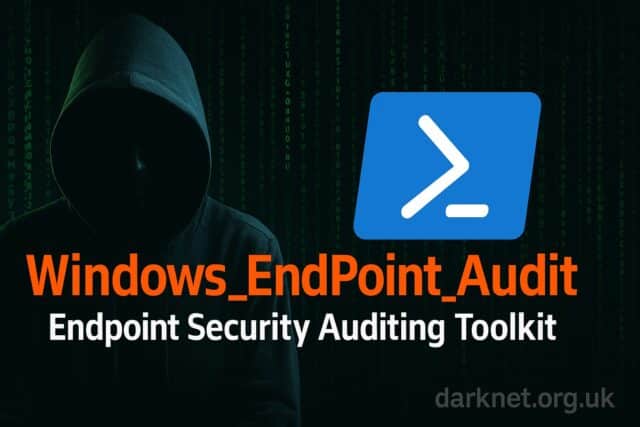Windows_EndPoint_Audit from ITAuditMaverick introduces a powerful method for offensive security professionals and red teams to examine endpoint configurations for misconfigurations, weak permissions, and forensic artefacts. By automating checks for services, registry settings, file permissions, and audit logs, this toolkit bridges the gap between offensive reconnaissance and defensive incident response.

Tool Overview
The toolkit is implemented in PowerShell and designed to run with minimal dependencies on standard Windows systems. It performs targeted audits of configurations, enabling identification of:
- Unsecured Windows service registrations
- World-readable or writable registry keys
- Folder and file permission weaknesses
- Audit log settings for Windows Security Event Channel
- Enabled PowerShell logging and process creation auditing
Results are output in structured JSON, facilitating integration with SIEMs or custom analysis pipelines. This audit tool complements offensive utilities, such as BloodHound for Active Directory enumeration and Seatbelt for endpoint reconnaissance.
Practical Attack Benefits
Red team assessments often overlook subtle misconfigurations that can elevate privileges after initial access. This audit tool surfaces weaknesses that can lead to:
- Service hijacking via insecure service permissions
- Registry tampering opportunities
- File permission abuse to execute malicious DLLs or payloads
- Incomplete audit logging enabling stealth persistence
By exposing these gaps, red teams can transition from access to persistence and stealth with confidence.
Usage and Integration
Install by cloning the repository:
git clone https://github.com/ITAuditMaverick/Windows_EndPoint_Audit.git |
Execute the main script in PowerShell with administrative privileges:
powershell -ExecutionPolicy Bypass -File .\AuditBelt.ps1 |
Key modules include service enumeration, ACL checks, registry audits, and event log validation. Customise the script for scheduled runs or integration with tools like Splunk or ELK for continuous auditing.
Case Studies of Real-World Impact
In penetration tests, teams have used similar tools to locate globally writable service registry keys, enabling binary hijacking for privilege escalation. After initial shell access, attackers leveraged weak registry permissions to deploy persistence mechanisms without triggering AV alerts.
Endpoint misconfigurations discovered via audit tools have also enabled DLL sideloading, allowing process injection and stealth lateral movement within compromised networks.
Tool Limitations and Mitigations
- PowerShell dependency means offensive operators may need to evade script execution policies.
- Execution requires administrative rights to access system-level components.
- Built-in Windows logging only, may require additional modules for advanced telemetry.
These limitations can be mitigated by using obfuscated script loaders, executing the tool in memory, or exporting results via secure channels such as HTTP over TLS or SMB.
Recommendations for Offensive Operators
- Combine the audit with post-exploitation frameworks, such as Metasploit or Cobalt Strike, to identify weaknesses in reports.
- Automate periodic auditing during engagements to detect drift after initial compromise.
- Pair the endpoint audit with SIEM monitoring of unimplemented changes or missing event logs.
- Use results to justify the deployment of custom persistence mechanisms or privilege escalation scenarios.
Defensive Use and Defensive Tooling
Blue teams can employ the audit toolkit to detect misconfigurations before attackers exploit them. Incorporation into red teaming provides dual value. For guidance on hardening, defenders can explore Windows baseline configuration tools, such as Microsoft’s Security Compliance Toolkit, for preventive measures.
Conclusion
Windows_EndPoint_Audit is a valuable utility that adds visibility into endpoint hardening. For red teams, it reveals paths for escalation and stealth. For defenders, the same reports highlight remediation priorities. Its PowerShell foundation ensures accessibility and integration. Offensive security practitioners should add it to their playbooks for comprehensive Windows endpoint control audits.
You can download Windows_EndPoint_Audit or read more here: https://github.com/ITAuditMaverick/Windows_EndPoint_Audit
